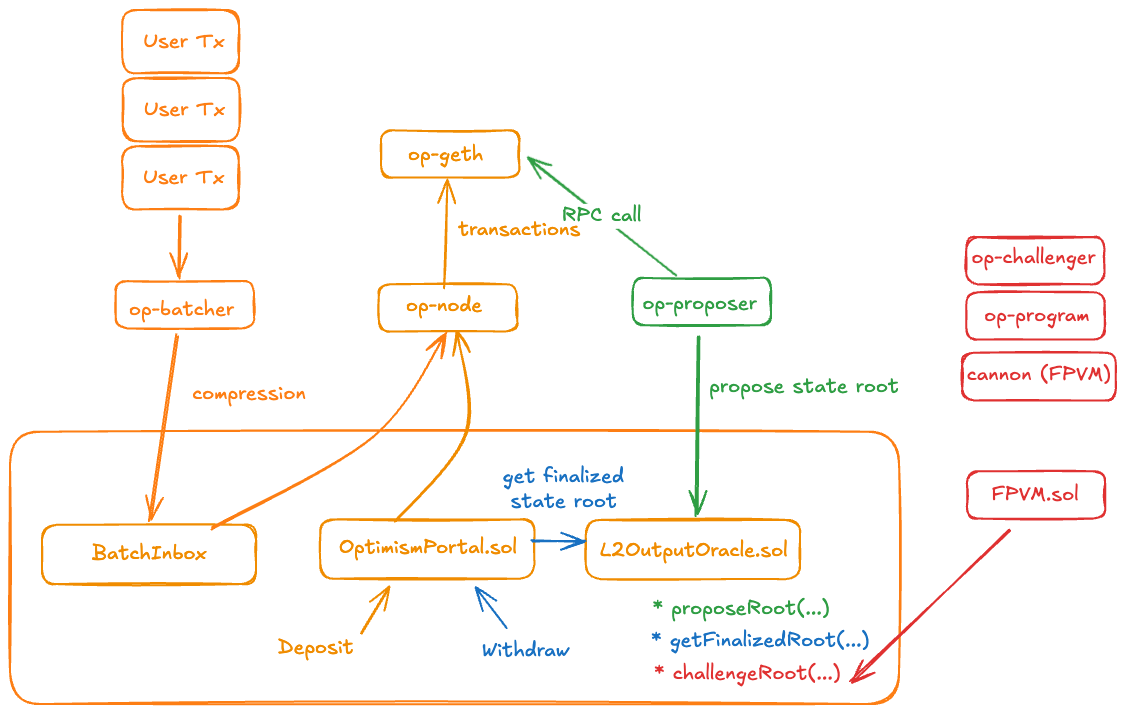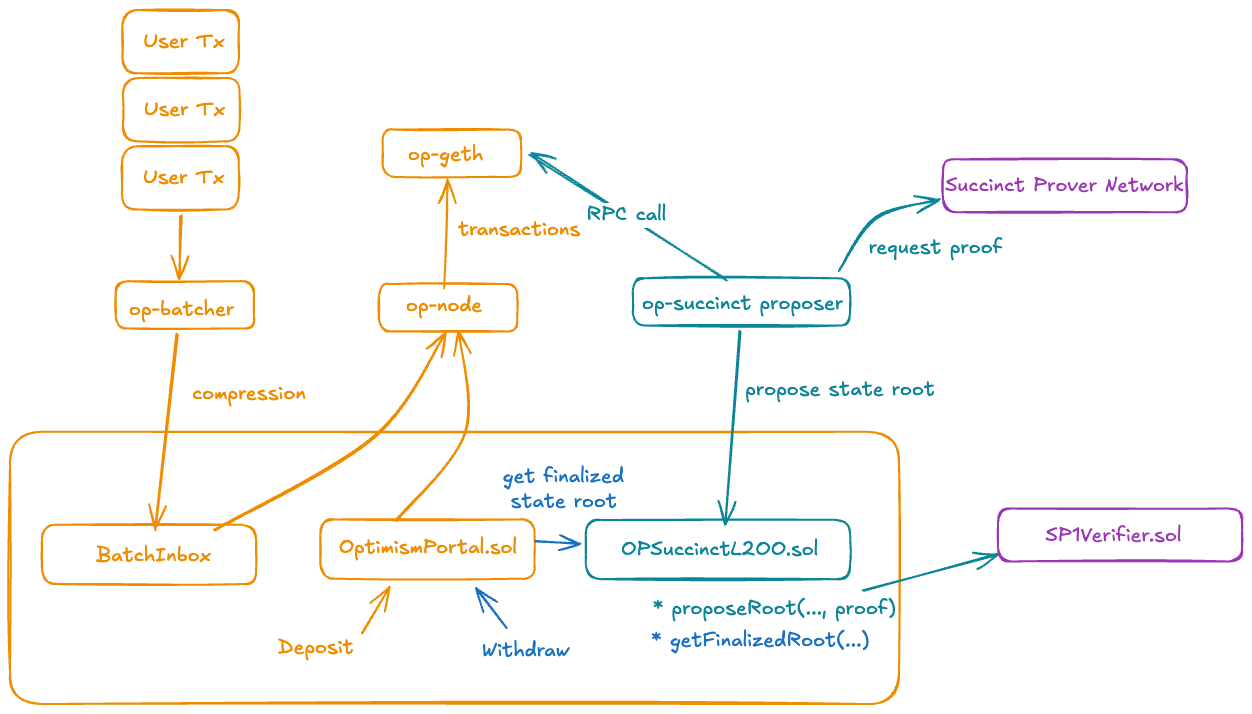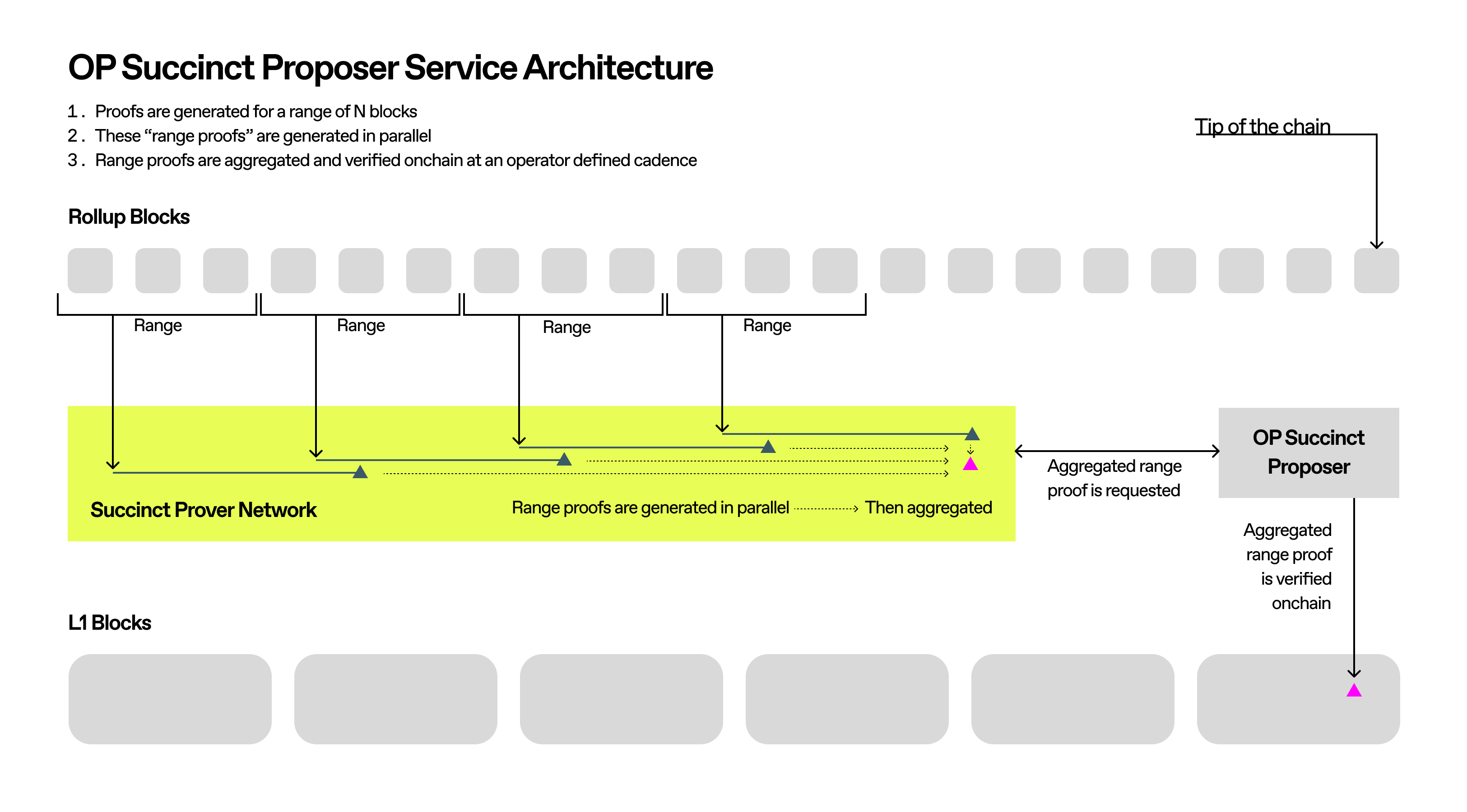Architecture
System Overview
OP Succinct is a lightweight upgrade to the OP Stack that enables ZK-based finality.
This document explains the standard OP Stack components and the lightweight modifications OP Succinct adds to enable proving blocks with zero-knowledge proofs using SP1.
Standard OP Stack Design
In the specification of the standard OP Stack design, there are 4 main components.
- OP Geth: Execution engine for the L2.
- OP Batcher: Collects and batches users transactions efficiently and posts to L1.
- OP Node: Reads batch data from L1, and passes to OP Geth to perform state transitions.
- OP Proposer: Posts state roots from OP Node to L1. Enables withdrawal processing.

OP Succinct Design
Overview
OP Succinct is a lightweight upgrade to the OP Stack that enables ZK-based finality. Specifically, it upgrades a single on-chain contract and the op-proposer component. No changes are needed to op-geth, op-batcher, or op-node.

Service Architecture
The OP Succinct Proposer is a new service that orchestrates the proving pipeline. It monitors L1 for posted batches, generates proofs, and submits them to L1 with ZK proofs.
- User transactions are processed by standard OP Stack components.
- Validity proofs are generated for ranges of blocks with the range program.
- Combine range proofs into a single aggregationproof that is cheaply verifiable on-chain.
- OP Succinct proposer submits aggregation proof to the on-chain contract.
- The on-chain contract verifies the proof and updates the L2 state root for withdrawals.
